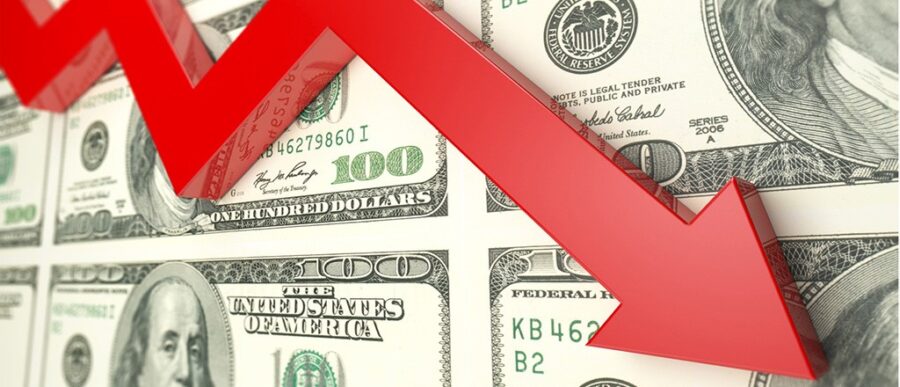During economic recessions or booms, the fortunes of a small set of firms hold powerful pointers to the health of the industries they represent, and also the broader economy, according to recent research co-authored by Wharton finance professor Sergio Salgado.
“A small fraction of firms represent a disproportionate number of the losses during a recession,” said Salgado, who wrote a paper titled “Skewed Business Cycles” with economics professors Nicholas Bloom of Stanford University and Fatih Guvenen of the University of Minnesota. (Listen to a podcast interview with Salgado at the top of this page.)
“The inspiration of this paper was looking at how uncertainty increases during recessions,” Salgado said. “Recessions are periods in which uncertainty increases, and firms and individuals get scared.” During such times, firms reduce investment and hiring, while households reduce consumption, he added. The researchers wanted to find out “what type of uncertainty increases” in such scenarios, and “whether things are getting better or worse,” he noted.
The Third-moment Shock
The paper’s authors note that recessions are typically accompanied by a “first-moment shock” such as the 2008 financial crisis, followed by a “second-moment shock” of increased uncertainty in the economic environment. They take that forward to identify a “third-moment shock” which they describe as a drop in the “skewness” (asymmetry) with an important number of firms experiencing substantial declines in sales, hiring, and productivity — i.e., an increase in the risk of a disaster at the firm level. They contend that examining this skewness at the firm level could bring new insights into how recessions play out across industries and the economy.
The researchers use detailed firm-level data on companies in 50 developing and developed countries including the U.S. to study hiring, sales, stock prices and productivity. In particular, they look at employment growth during the most recent two recession years (2001-2002 and 2008-2009) and the boom periods of 2003-2006 and 2010-2014. The authors find that the skewness of firms’ outcomes, such as sales growth, is procyclical, becoming negative during periods of low economic activity. This means, for instance, that during recessions, the median firm does relatively well, while a small number of firms receive a disproportional drop in their sales, generating a negative sales growth that stretches out relative to normal periods.
Furthermore, they find that the patterns seen in the skewness of firms’ outcomes is a phenomenon observed not only in the U.S. but also in other countries, both developed and developing. Hence, the authors conclude, to have a clearer picture of what is happening in a recessions, one must look beyond the “average” firm in the economy.
The authors provide evidence that the decline in the skewness of firms’ outcomes is partially driven by demand or productivity shocks that hurt the profitability of firms, which in turn generates a decline in capital investment and aggregate economic activity. The authors conclude that negative shocks to the skewness in the productivity of firms could generate a recession by themselves.
How Small Groups of Firms Matter
In the paper, the authors note that during economic downturns, a subset of firms does “extremely badly, leading to a left tail of large negative outcomes.” For example, Salgado noted that during the 2008 Great Recession, 20% of publicly traded firms represented 80% of the total fall in sales – a disproportionate concentration of firms on the left side if that data were to be plotted on a chart. Such periods are often accompanied by a deceleration of growth for a group of firms that are doing relatively better. That picture shows up in a chart as “a compression of the right tail of positive outcomes,” the authors note. The opposite happens during expansions, with the left tail shrinking and the right tail expanding, they add.
“When we want to make policies … we need to target specific firms that are hit harder by the recession.” –Sergio Salgado
“Those are the firms that we have to be looking at when we want to make policies. When we want to make policies, we don’t need to target the average firm. We need to target specific firms that are hit harder by the recession,” Salgado said.
“The more we look at the data, the more we realize that this is happening in every single country,” he added. “A particular feature of business cycles is that a large fraction of the decline is just accounted for by a small group of firms.”
One finding that stood out was the significance of the age of a firm. “Size doesn’t make a large difference, but firms that are old and well-established seem to fare better during recessions, and these bad outcomes happen to them less often,” said Salgado. “Young firms are more reactive to these effects, and those are the ones that [are hurt] the most during recessions.”
“It is not something that is happening only at the firm level; it also affects real lives of real people.” –Sergio Salgado
The authors then use their empirical results to create a macro economic model of firm dynamics, calibrated to match salient features of the U.S. economy. “When we are able to reproduce in the model these 20% of firms that receive very bad, negative outcomes during recessions, that effect represents almost a 2% decline in economic activity,” said Salgado. In fact, the authors state that in their modeled economy, “a decline in the skewness of firms’ shocks of the magnitude observed in a typical US recession generates a drop in GDP of 1.7%.”
Future Research Directions
Salgado said that future research on the subject could benefit from the increasing availability of micro economic data on workers and the firms where they work. “We want to ask the following: For those firms that have fared the worst during a recession, what happened to their workers? Were they fired, or were their wages reduced? If they were fired, where did they end up?” The findings of such research would provide insights into “the overall welfare effects of these tail shocks,” he noted. “It is not something that is happening only at the firm level; it also affects real lives of real people.”



